Miss Jane Marple is a fictional character in Agatha Christie's crime novels and short stories. Miss Marple lives in the village of St. Mary Mead and acts as an amateur consulting detective. Often characterized as an elderly spinster, she is one of Christie's best-known characters and has been portrayed numerous times on screen. Her first appearance was in a short story published in The Royal Magazine in December 1927, "The Tuesday Night Club", which later became the first chapter of The Thirteen Problems (1932). Her first appearance in a full-length novel was in The Murder at the Vicarage in 1930, and her last appearance was in Sleeping Murder in 1976.

Agatha Christie's Poirot, or simply Poirot, is a British mystery drama television programme that aired on ITV from 8 January 1989 to 13 November 2013. The ITV show is based on many of Agatha Christie’s famous crime fiction series, which revolves around the fictional private investigator, Hercule Poirot. David Suchet starred as the fictional detective. Initially produced by LWT, the series was later produced by ITV Studios. The series also aired on VisionTV in Canada and on PBS and A&E in the US.

Cards on the Table is a detective fiction novel by the English author Agatha Christie, first published in the UK by the Collins Crime Club on 2 November 1936 and in the US by Dodd, Mead and Company the following year. The UK edition retailed at seven shillings and sixpence (7/6) and the US edition at $2.00.

Captain Arthur J. M. Hastings, OBE, is a fictional character created by Agatha Christie as the companion-chronicler and best friend of the Belgian detective, Hercule Poirot. He is first introduced in Christie's 1920 novel The Mysterious Affair at Styles and appears as a character in seven other Poirot novels, including the final one Curtain: Poirot's Last Case (1975), along with a play and many short stories. He is also the narrator of several of them.
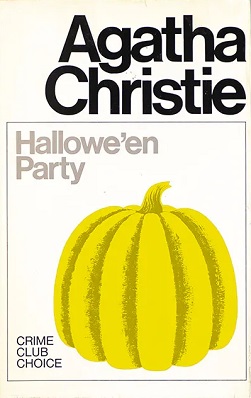
Hallowe'en Party is a work of detective fiction by English writer Agatha Christie, first published in the United Kingdom by the Collins Crime Club in November 1969 and in the United States by Dodd, Mead and Company later in the same year. This book was dedicated to writer P. G. Wodehouse. It has been adapted for television, radio, and most recently for the film A Haunting in Venice (2023).
Ariadne Oliver is a fictional character in the novels of Agatha Christie. She is a crime fiction novelist, the creator of the fictional Finnish detective Sven Hjerson, and a friend of Hercule Poirot.

The Adventure of the Christmas Pudding and a Selection of Entrées is a short story collection written by Agatha Christie and first published in the UK by the Collins Crime Club on 24 October 1960. It is the only Christie first edition published in the UK that contains stories with both Hercule Poirot and Miss Marple, the writer's two most famous detectives. It retailed in the UK for twelve shillings and sixpence (12/6) and comprises six cases. It was not published in the US although the stories it contains were published in other volumes there.

Elephants Can Remember is a work of detective fiction by British writer Agatha Christie, first published in 1972. It features her Belgian detective Hercule Poirot and the recurring character Ariadne Oliver. This was the last novel to feature either character, although it was succeeded by Curtain: Poirot's Last Case, which had been written in the early 1940s but was published last. Elephants Can Remember concentrates on memory and oral testimony.

Three Act Tragedy is a work of detective fiction by British writer Agatha Christie, first published in the United States by Dodd, Mead and Company in 1934 under the title Murder in Three Acts and in the UK by the Collins Crime Club in January 1935 under Christie's original title. The US edition retailed at $2.00 and the UK edition at seven shillings and sixpence (7/6).

Mrs McGinty's Dead is a work of detective fiction by British writer Agatha Christie, first published in the US by Dodd, Mead and Company in February 1952 and in the UK by the Collins Crime Club on 3 March the same year. The US edition retailed at $2.50 and the UK edition at nine shillings and sixpence (9/6). The Detective Book Club issued an edition, also in 1952, as Blood Will Tell.

The Pale Horse is a work of detective fiction by British writer Agatha Christie, first published in the UK by the Collins Crime Club on 6 November 1961, and in the US by Dodd, Mead and Company the following year. The UK edition retailed at fifteen shillings and the US edition at $3.75. The novel features her novelist detective Ariadne Oliver as a minor character, and reflects in tone the supernatural novels of Dennis Wheatley who was then at the height of his popularity. The Pale Horse is mentioned in Revelation 6:8, where it is ridden by Death.
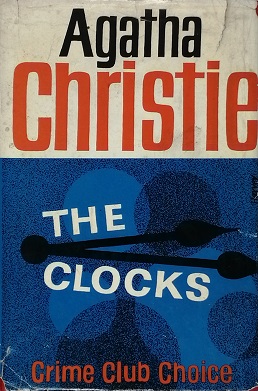
The Clocks is a work of detective fiction by British writer Agatha Christie, first published in the UK by the Collins Crime Club on 7 November 1963 and in the US by Dodd, Mead and Company the following year. It features the Belgian detective Hercule Poirot. The UK edition retailed at sixteen shillings (16/-) and the US edition at $4.50.

Third Girl is a work of detective fiction by Agatha Christie and first published in the UK by the Collins Crime Club in November 1966 and in the US by Dodd, Mead and Company the following year. The UK edition retailed at eighteen shillings (18/-) and the US edition at $4.50.
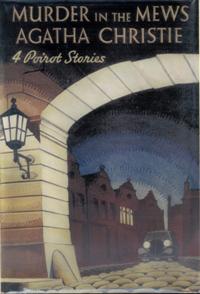
Murder in the Mews and Other Stories is a short story collection by British writer Agatha Christie, first published in the UK by Collins Crime Club on 15 March 1937. In the US, the book was published by Dodd, Mead and Company under the title Dead Man's Mirror in June 1937 with one story missing ; the 1987 Berkeley Books edition of the same title has all four stories. All of the tales feature Hercule Poirot. The UK edition retailed at seven shillings and sixpence (7/6) and the first US edition at $2.00.
This page details the other fictional characters created by Agatha Christie in her stories about the Belgian detective, Hercule Poirot.
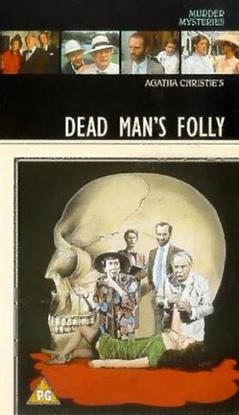
Dead Man's Folly is a 1986 British-American made-for-television mystery film featuring Agatha Christie's Belgian detective Hercule Poirot. It is based on Christie's 1956 novel Dead Man's Folly. The film was directed by Clive Donner and starred Peter Ustinov as Poirot.
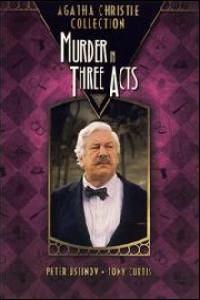
Murder in Three Acts is a British-American made-for-television mystery film of 1986 produced by Warner Bros. Television, featuring Peter Ustinov as Agatha Christie's detective Hercule Poirot. Directed by Gary Nelson, it co-starred Jonathan Cecil as Hastings, Tony Curtis, and Emma Samms.
In Agatha Christie's mystery novels, several characters cross over different sagas, creating a fictional universe in which most of her stories are set. This article has one table to summarize the novels with characters who occur in other Christie novels; the table is titled Crossovers by Christie. There is brief mention of characters crossing over in adaptations of the novels. Her publications, both novels and short stories, are then listed by main detective, in order of publication. Some stories or novels authorised by the estate of Agatha Christie, using the characters she created, and written long after Agatha Christie died, are included in the lists.
Lists of adaptations of the works of Agatha Christie:
Hercule Poirot is a series of full cast BBC Radio drama adaptations of Agatha Christie's Hercule Poirot novels and short stories adapted by Michael Bakewell, broadcast on BBC Radio 4 between 1985 and 2007. With the exception of the first two adaptations, the series stars John Moffatt as Poirot.















